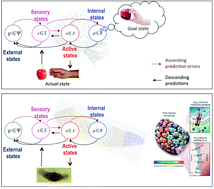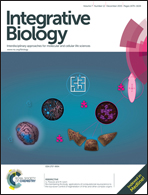Re-membering the body: applications of computational neuroscience to the top-down control of regeneration of limbs and other complex organs†
Abstract
A major goal of regenerative medicine and bioengineering is the regeneration of complex organs, such as limbs, and the capability to create artificial constructs (so-called biobots) with defined morphologies and robust self-repair capabilities. Developmental biology presents remarkable examples of systems that self-assemble and regenerate complex structures toward their correct shape despite significant perturbations. A fundamental challenge is to translate progress in molecular genetics into control of large-scale organismal anatomy, and the field is still searching for an appropriate theoretical paradigm for facilitating control of pattern homeostasis. However, computational neuroscience provides many examples in which cell networks – brains – store memories (e.g., of geometric configurations, rules, and patterns) and coordinate their activity towards proximal and distant goals. In this Perspective, we propose that programming large-scale morphogenesis requires exploiting the information processing by which cellular structures work toward specific shapes. In non-neural cells, as in the brain, bioelectric signaling implements information processing, decision-making, and memory in regulating pattern and its remodeling. Thus, approaches used in computational neuroscience to understand goal-seeking neural systems offer a toolbox of techniques to model and control regenerative pattern formation. Here, we review recent data on developmental bioelectricity as a regulator of patterning, and propose that target morphology could be encoded within tissues as a kind of memory, using the same molecular mechanisms and algorithms so successfully exploited by the brain. We highlight the next steps of an unconventional research program, which may allow top-down control of growth and form for numerous applications in regenerative medicine and synthetic bioengineering.


 Please wait while we load your content...
Please wait while we load your content...